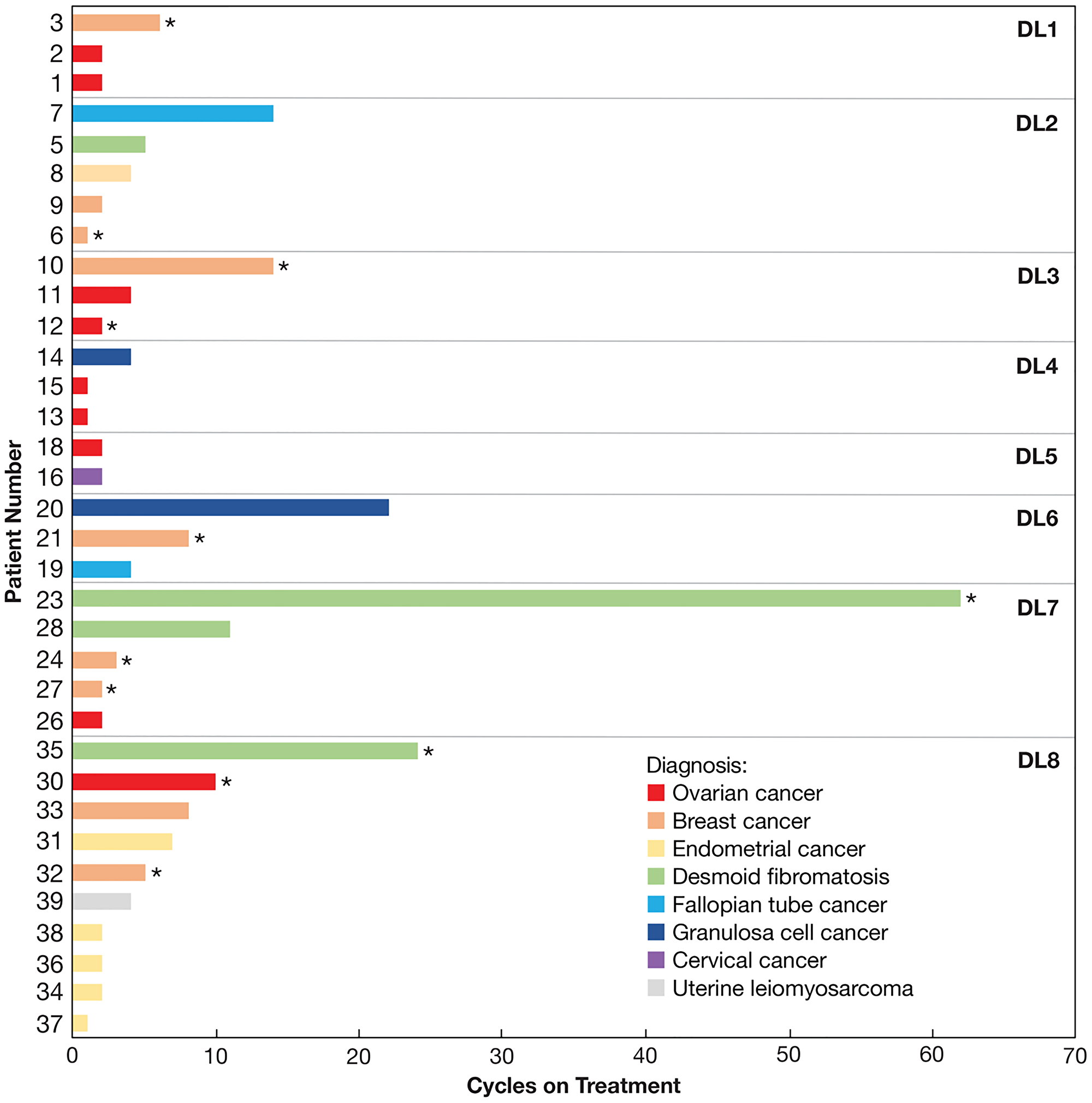Oncotarget: Phase 1 study of Z-Endoxifen in patients with solid tumors
FOR IMMEDIATE RELEASE
2021-02-17
Oncotarget published "Phase 1 study of Z-Endoxifen in patients with advanced gynecologic, desmoid, and hormone receptor-positive solid tumors" which reported that Z-endoxifen administration was anticipated to bypass these variations, increasing active drug levels, and potentially benefiting patients responding sub-optimally to tamoxifen.
Patients with treatment-refractory gynecologic malignancies, desmoid tumors, or hormone receptor-positive solid tumors took oral Z-endoxifen daily with a 3 3 phase 1 dose escalation format over 8 dose levels.
Three patients had partial responses and 8 had prolonged stable disease; 44.4% of patients at dose levels 6–8 achieved one of these outcomes.
Six patients who progressed after tamoxifen therapy experienced partial response or stable disease for ≥ 6 cycles with Z-endoxifen; one with desmoid tumor remains on study after 62 cycles.
The Oncotarget article provides evidence that antitumor activity and prolonged stable disease are achieved with Z-endoxifen despite prior tamoxifen therapy, supporting further study of Z-endoxifen, particularly in patients with desmoid tumors.
The Oncotarget article provides evidence that antitumor activity and prolonged stable disease are achieved with Z-endoxifen despite prior tamoxifen therapy.
Dr. Alice P. Chen from The Division of Cancer Treatment and Diagnosis at The National Cancer Institute in Bethesda Maryland said, "Tamoxifen is a member of the selective estrogen receptor modulator (SERM) drug family and is approved by the FDA for the treatment of patients with estrogen receptor-positive (ER+) metastatic breast cancer, for adjuvant therapy of high-risk ER+/progesterone receptor-positive (PR+) breast cancer, and for chemoprevention in women at high risk of developing breast cancer."
However, only about 50% of women with metastatic ER breast cancer who receive treatment with tamoxifen derive benefit, and trials have yielded mixed results regarding the clinical benefit of tamoxifen based on dose or serum concentration.
Endoxifen and 4-hydroxy-tamoxifen have similar binding affinities for ERα and ERβ, which are approximately 100-fold higher than those of tamoxifen or NDM-tamoxifen, but endoxifen plasma concentrations following tamoxifen administration are 5- to 20-fold higher than 4-hydroxy-tamoxifen.
Multiple other factors, including age, body mass index, gender, and polypharmacy contribute to how patients metabolize tamoxifen into endoxifen.

Figure 3: Number of cycles completed by each evaluable patient. Colors indicate the diagnosis of each patient as indicated. Asterisks indicate patients who had previously progressed on tamoxifen therapy.
Among patients who receive tamoxifen, levels of endoxifen are lower in poor metabolizers, a finding that appears to correlate with significantly reduced time to tumor recurrence in these patients compared to those with greater CYP2D6 metabolism following treatment with adjuvant tamoxifen.
The Chen Research Team concluded in their Oncotarget Research Output that additional preclinical and clinical data demonstrate that Z-endoxifen can elicit major responses in ER breast cancer that has progressed on tamoxifen.
Despite these data in breast cancer, the optimal dose or concentration of Z-endoxifen in other tumors is unknown; however, our observation that high dose Z-endoxifen elicits antitumor activity in patients with non-breast malignancies would be in keeping with the data already observed demonstrating Z-endoxifen antitumor activity in breast cancers that have progressed on tamoxifen.
Furthermore, the overall safety profile, achievable plasma concentrations of Z-endoxifen, and clinical efficacy seen in this trial indicate that this agent may particularly benefit patients who have progressed on tamoxifen treatment and suggest that further studies of Z-endoxifen should be considered in patients with non-breast malignancies.
Sign up for free Altmetric alerts about this article
DOI - https://doi.org/10.18632/oncotarget.27887
Full text - https://www.oncotarget.com/article/27887/text/
Correspondence to - Alice P. Chen - chenali@mail.nih.gov
Keywords - Z-endoxifen, phase 1, tamoxifen, pharmacokinetics
About Oncotarget
Oncotarget is a weekly, peer-reviewed, open access biomedical journal covering research on all aspects of oncology.
To learn more about Oncotarget, please visit https://www.oncotarget.com or connect with:
SoundCloud - https://soundcloud.com/oncotarget
Facebook - https://www.facebook.com/Oncotarget/
Twitter - https://twitter.com/oncotarget
LinkedIn - https://www.linkedin.com/company/oncotarget
Pinterest - https://www.pinterest.com/oncotarget/
Reddit - https://www.reddit.com/user/Oncotarget/
Oncotarget is published by Impact Journals, LLC please visit https://www.ImpactJournals.com or connect with @ImpactJrnls
Media Contact
MEDIA@IMPACTJOURNALS.COM
18009220957x105
Copyright © 2025 Rapamycin Press LLC dba Impact Journals




